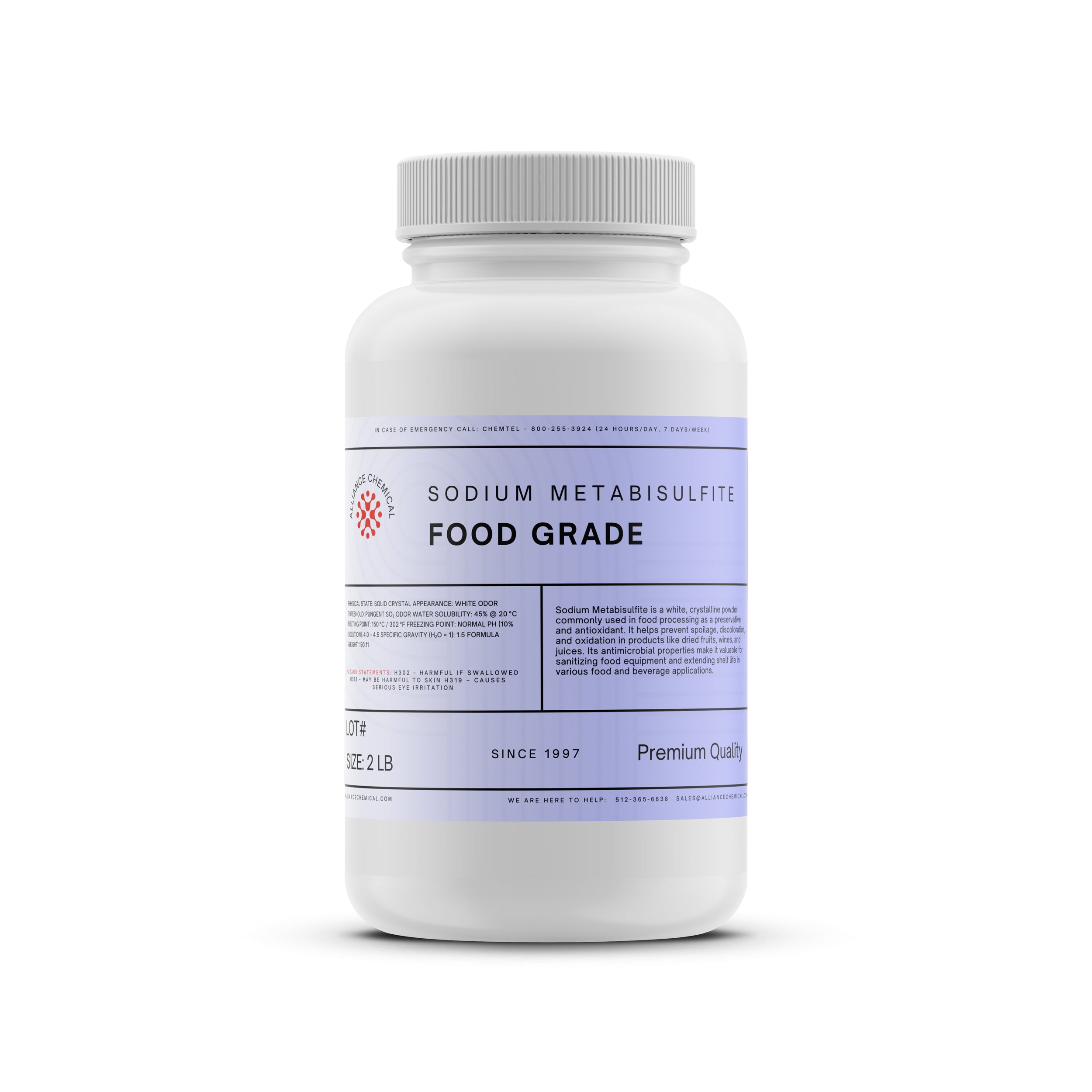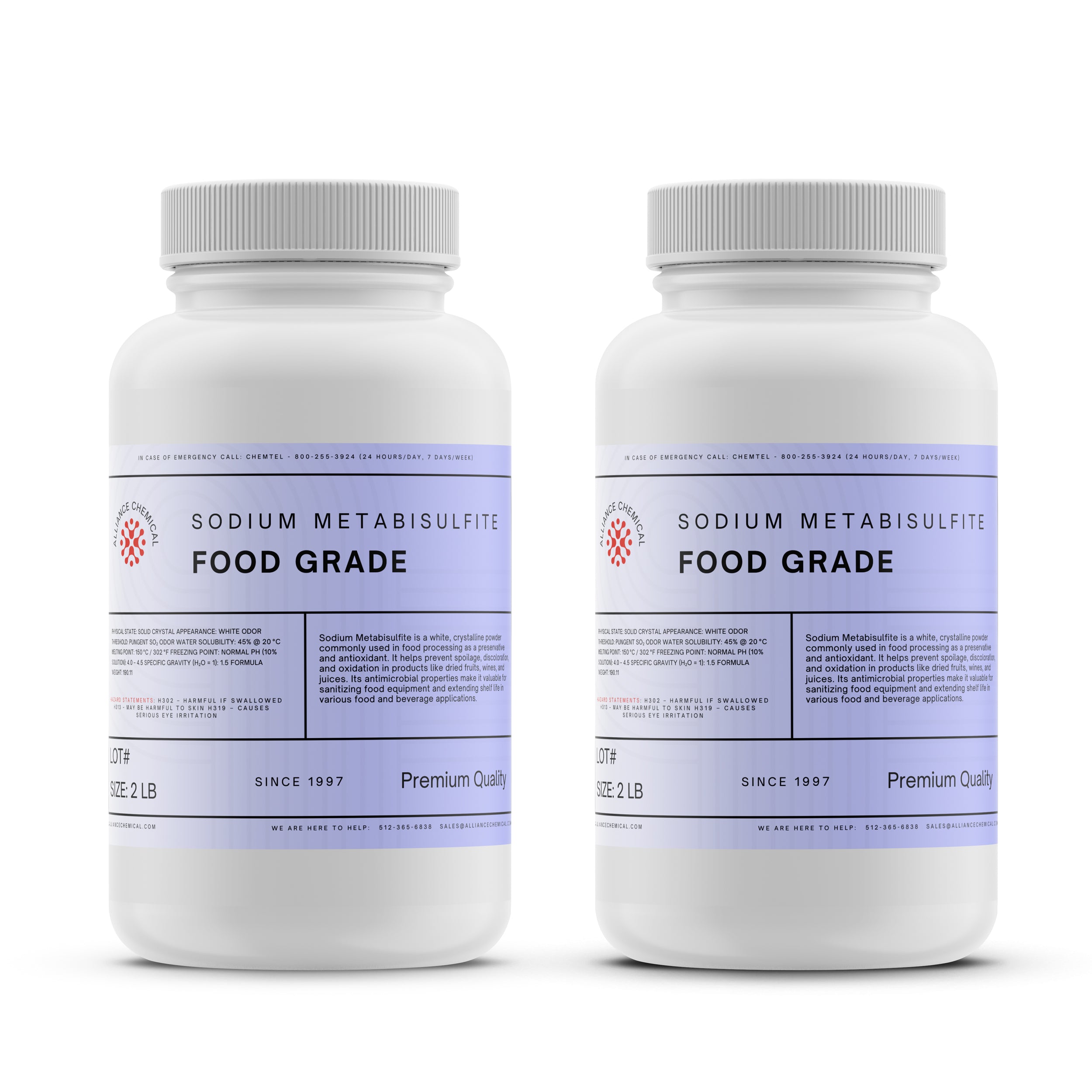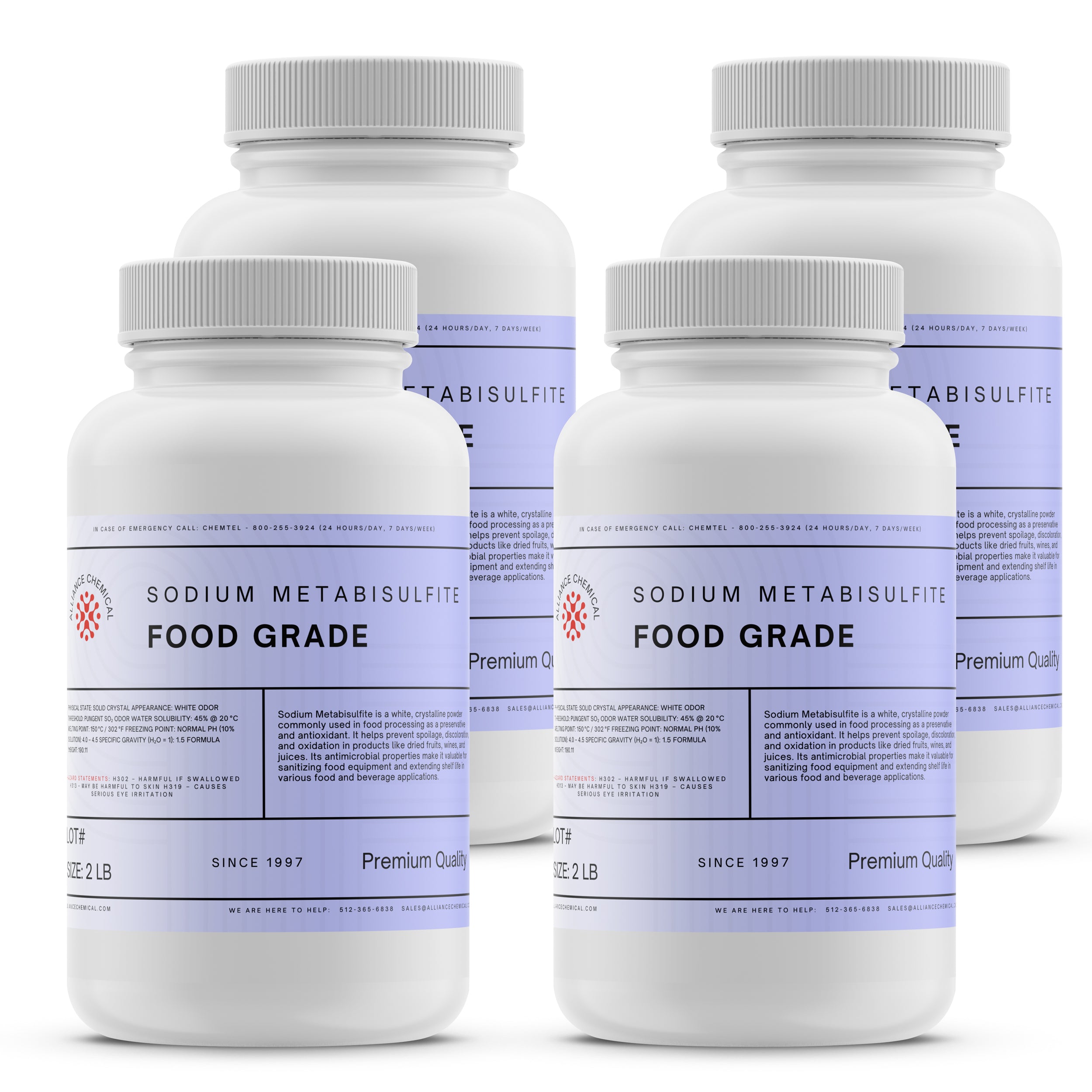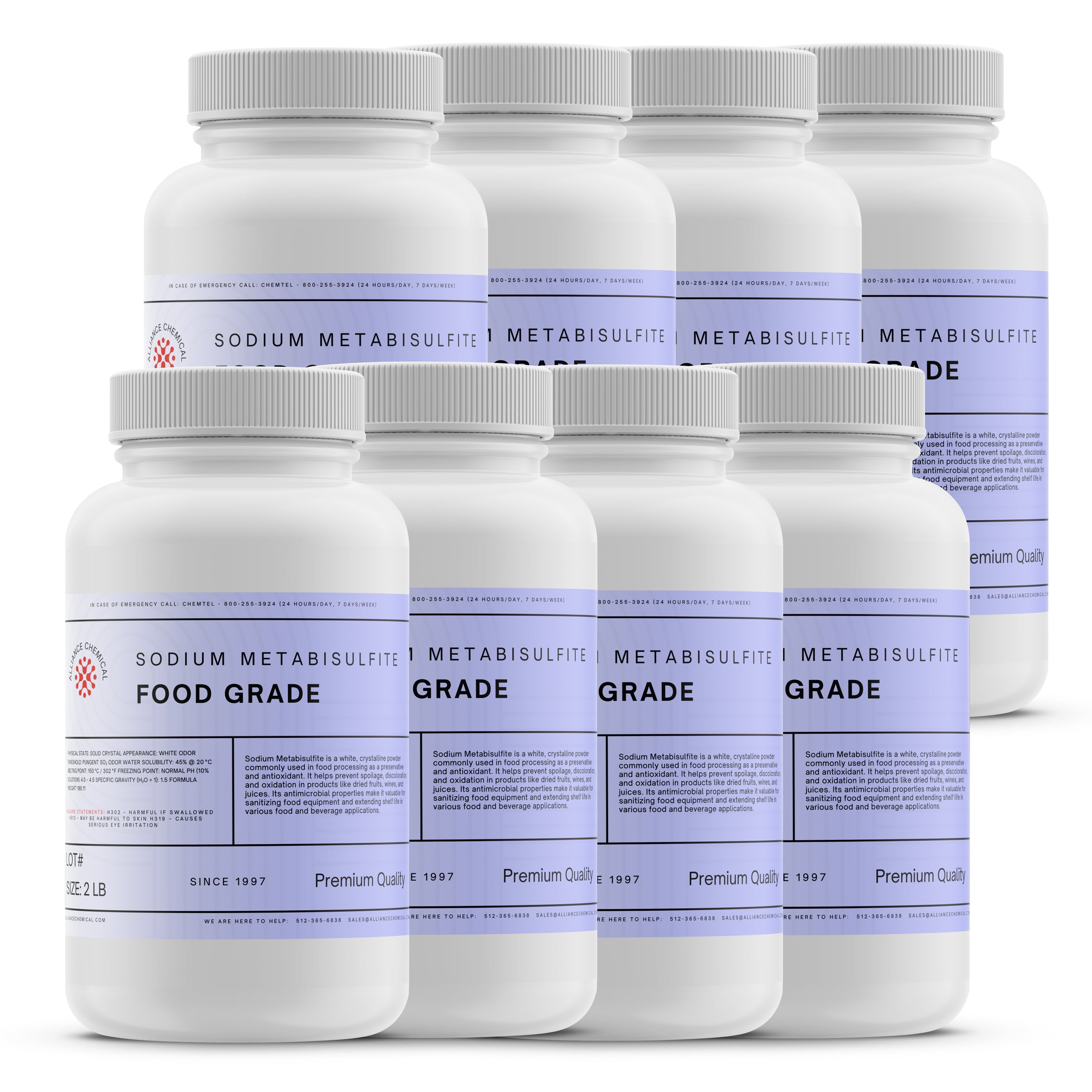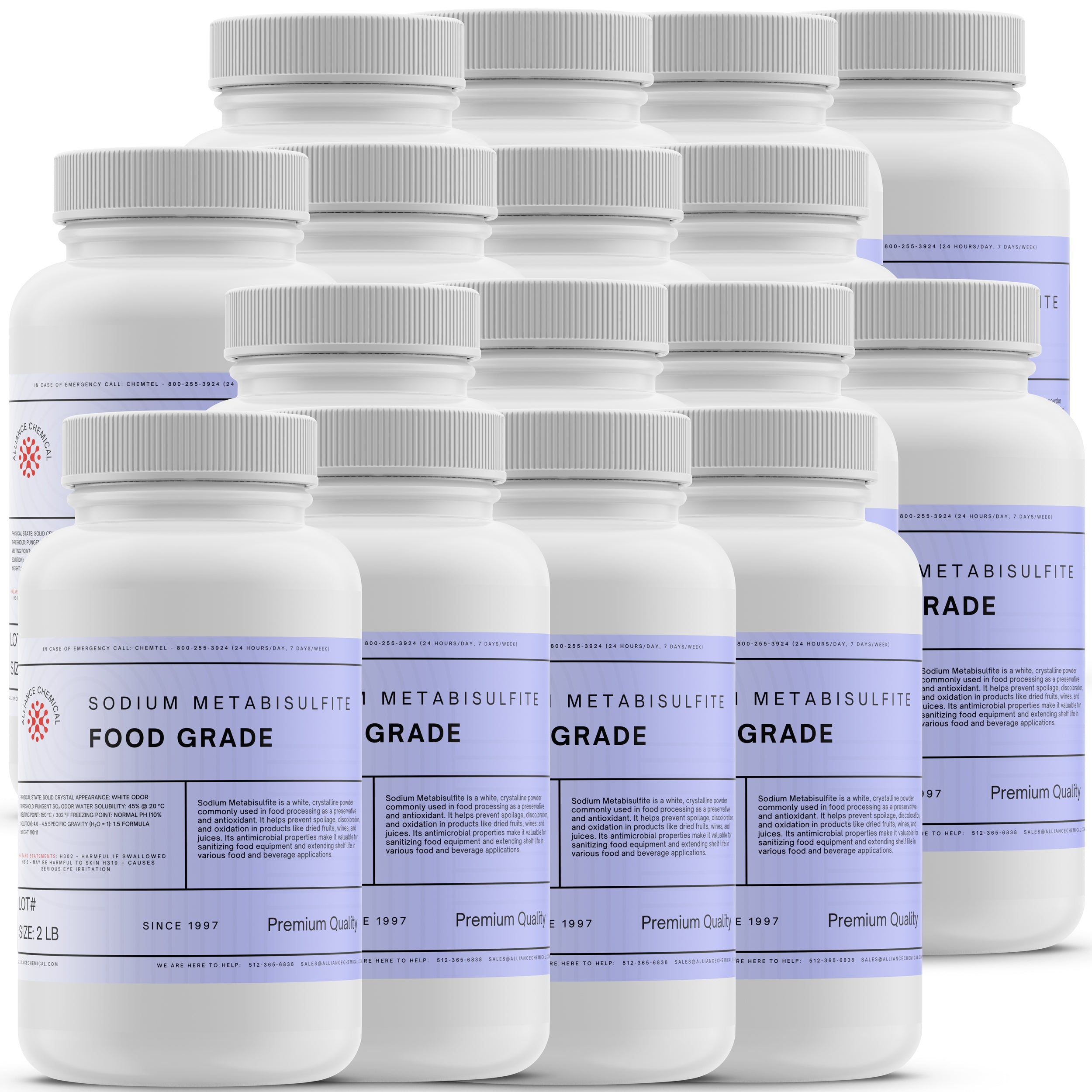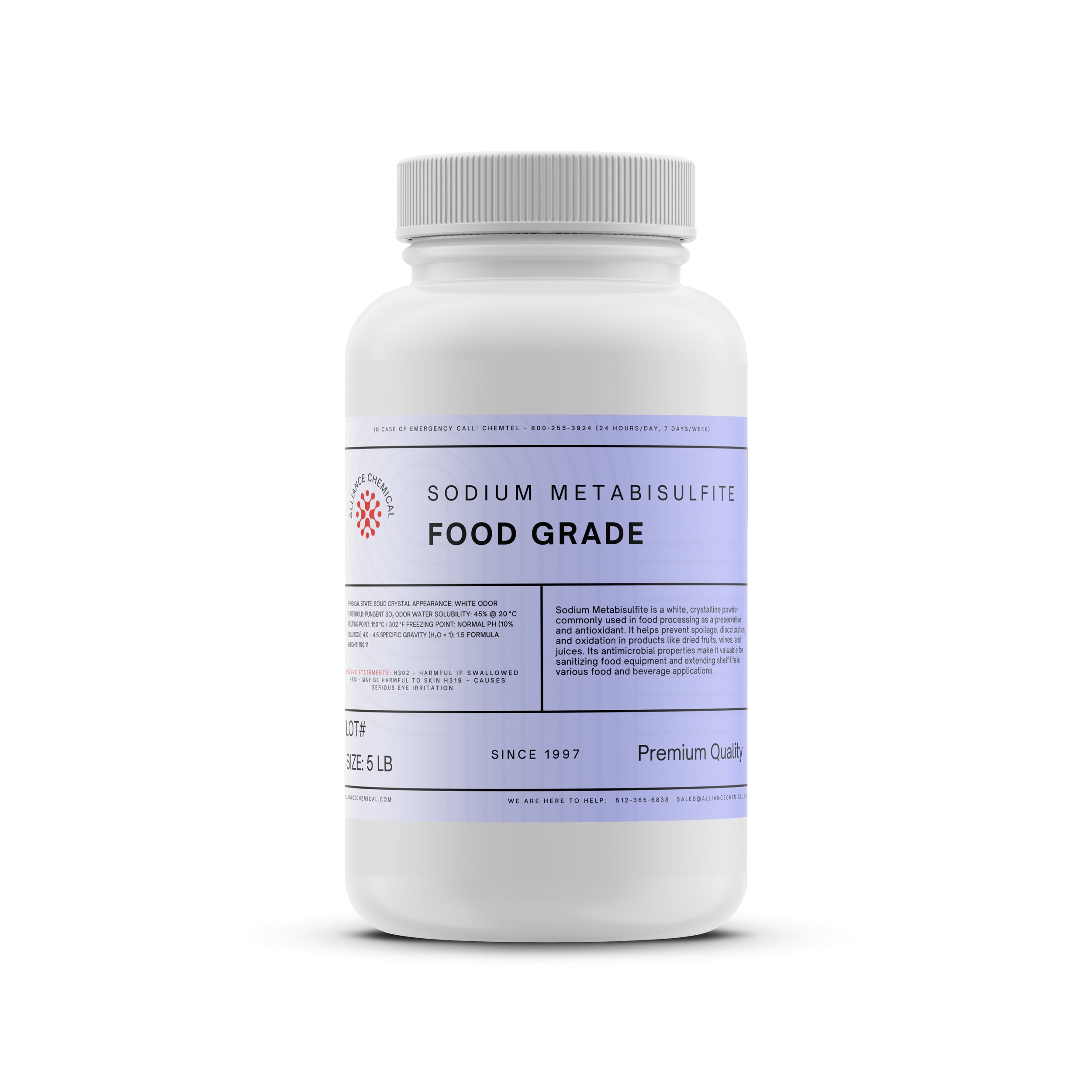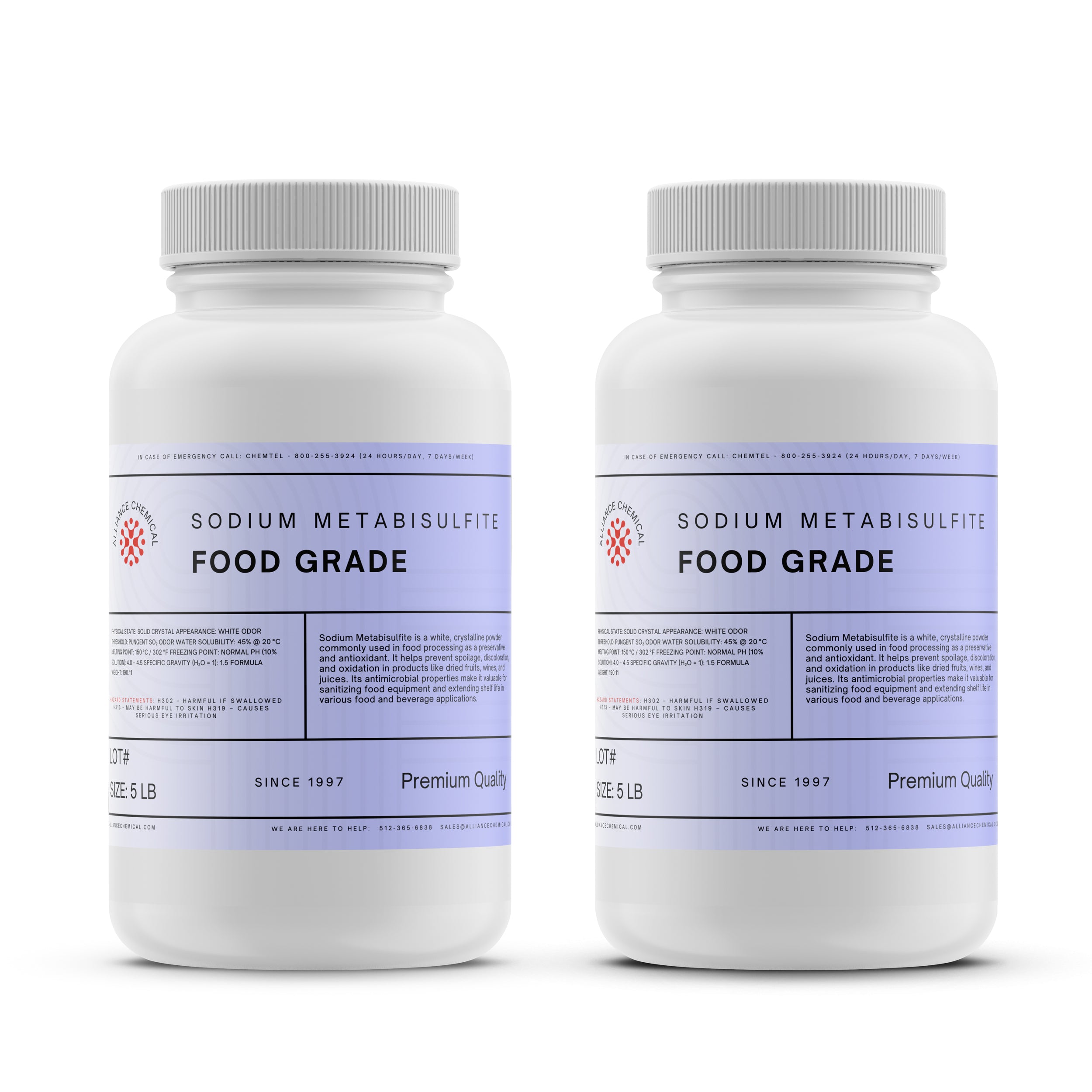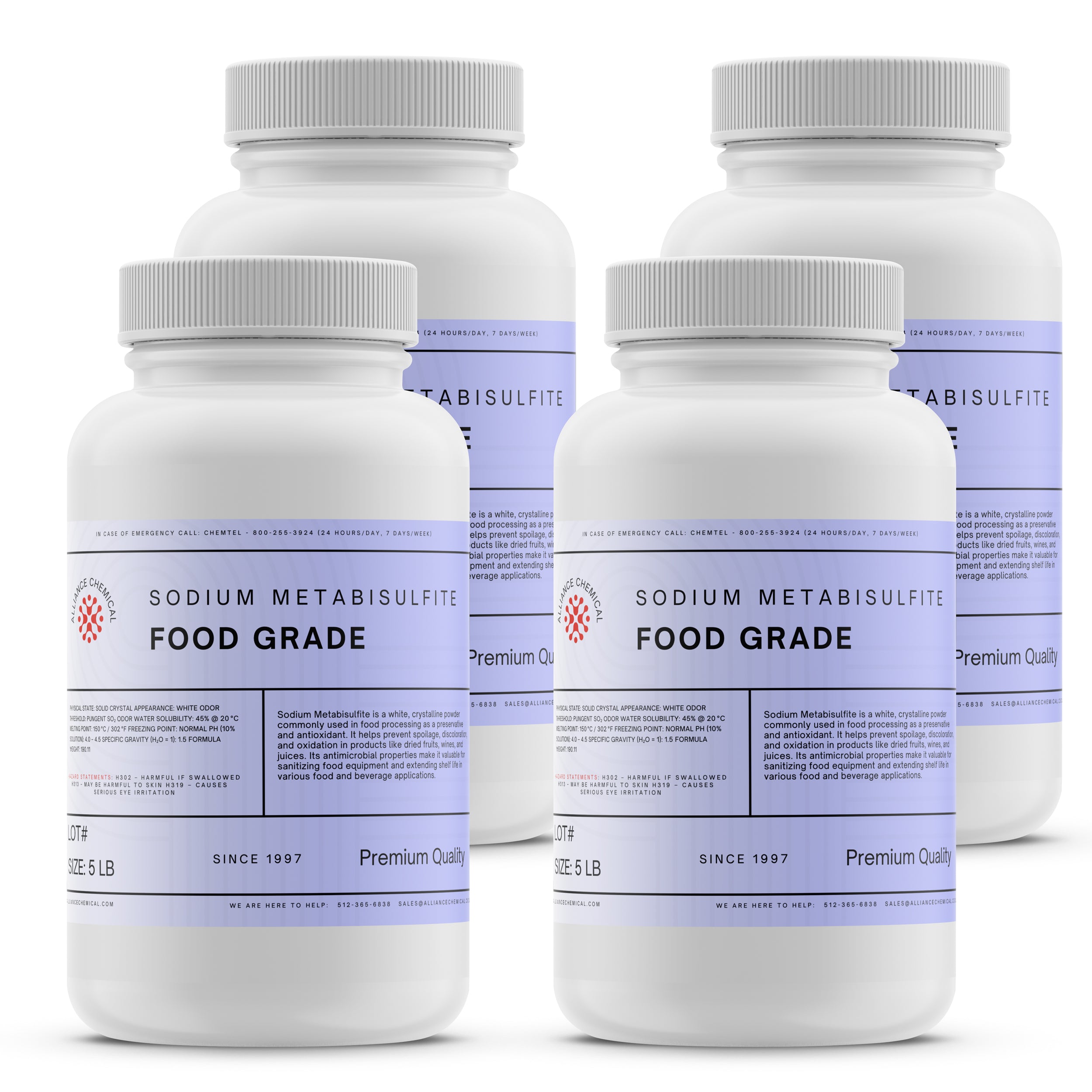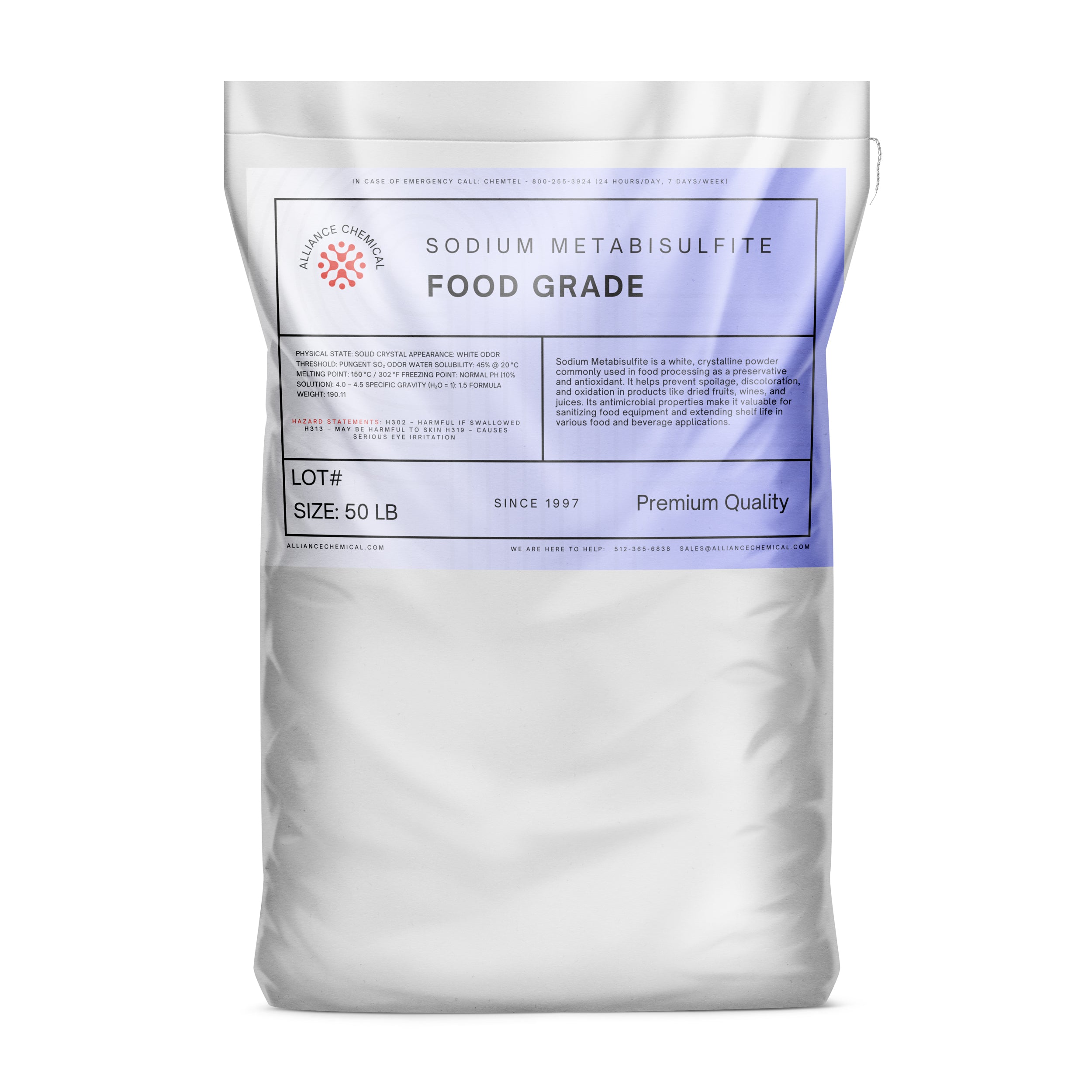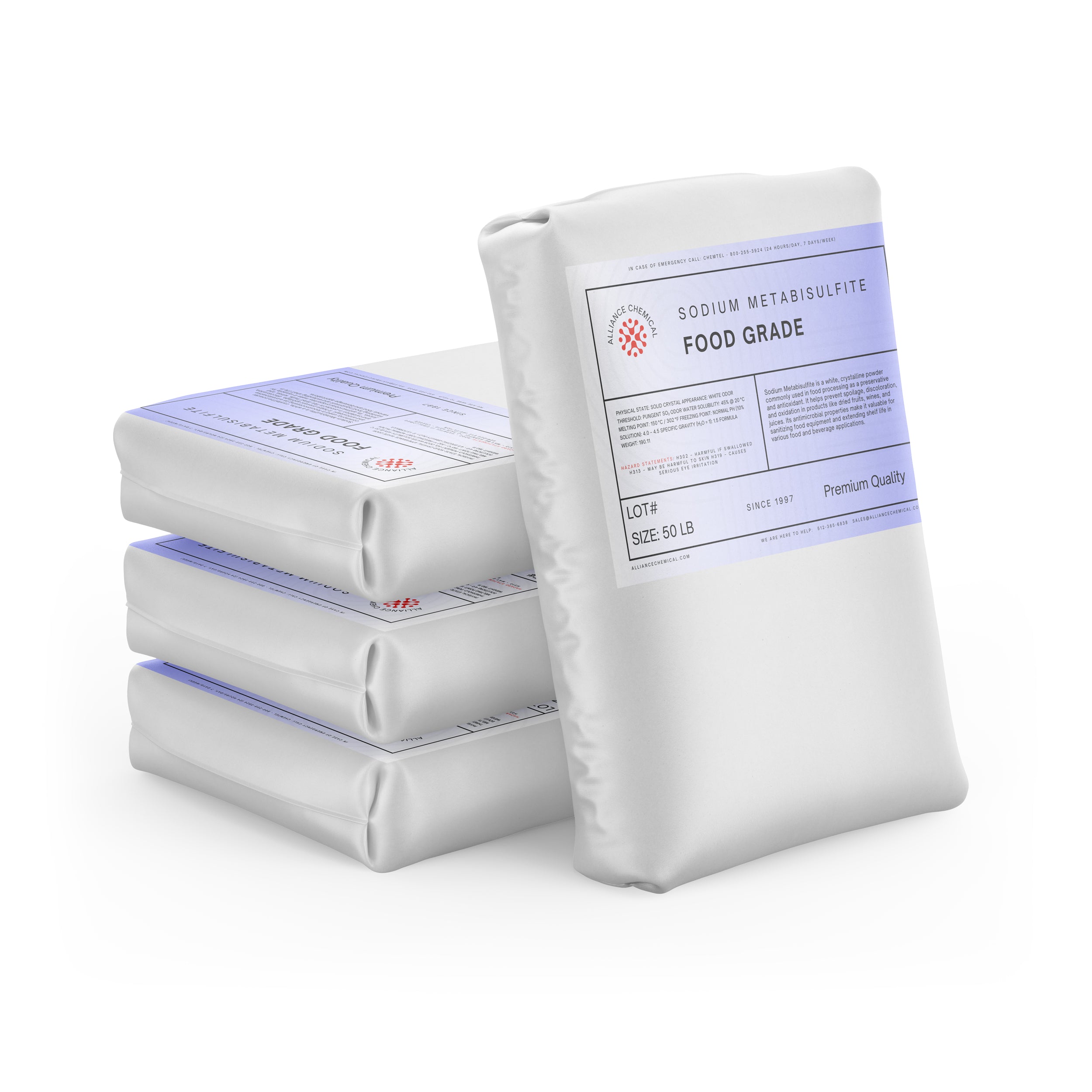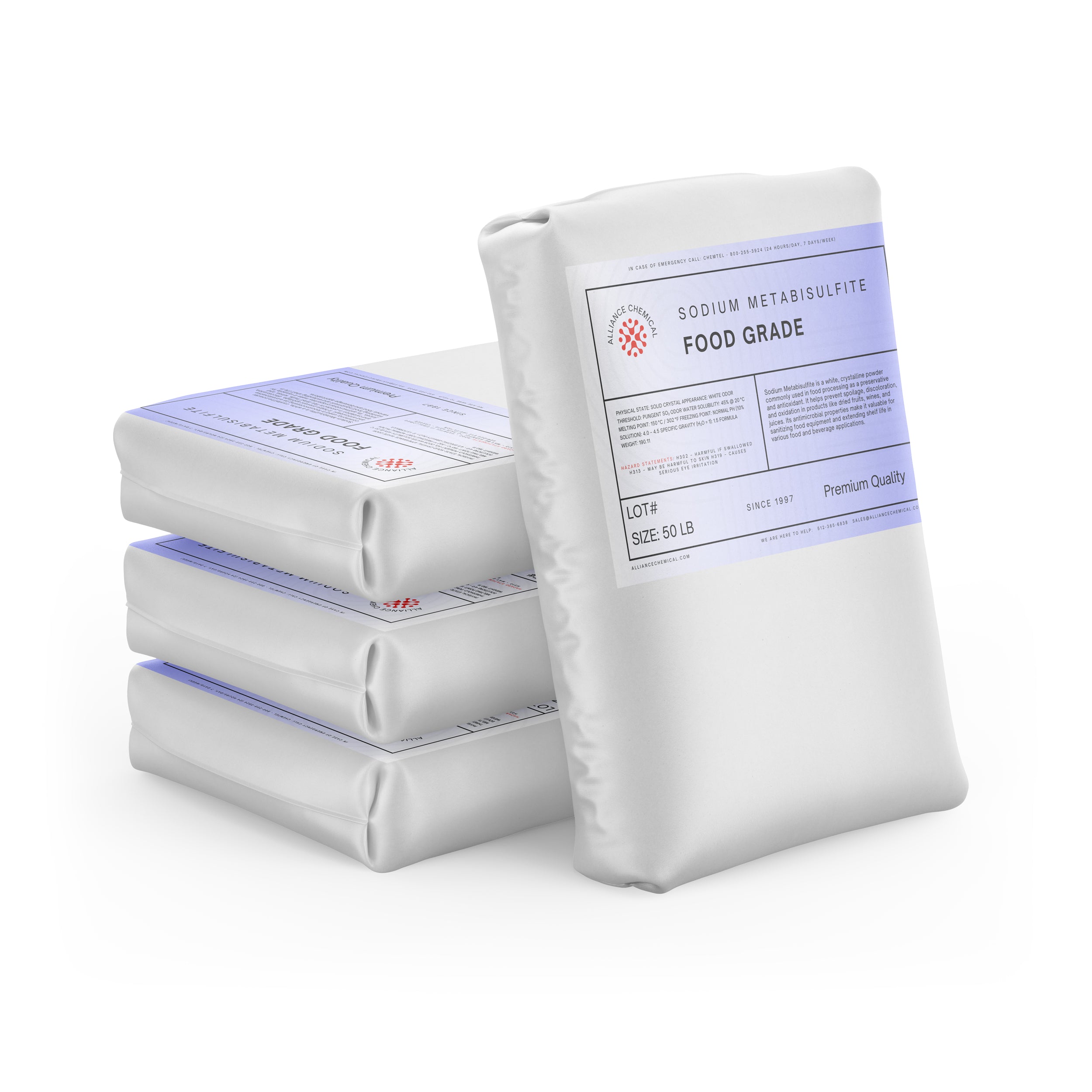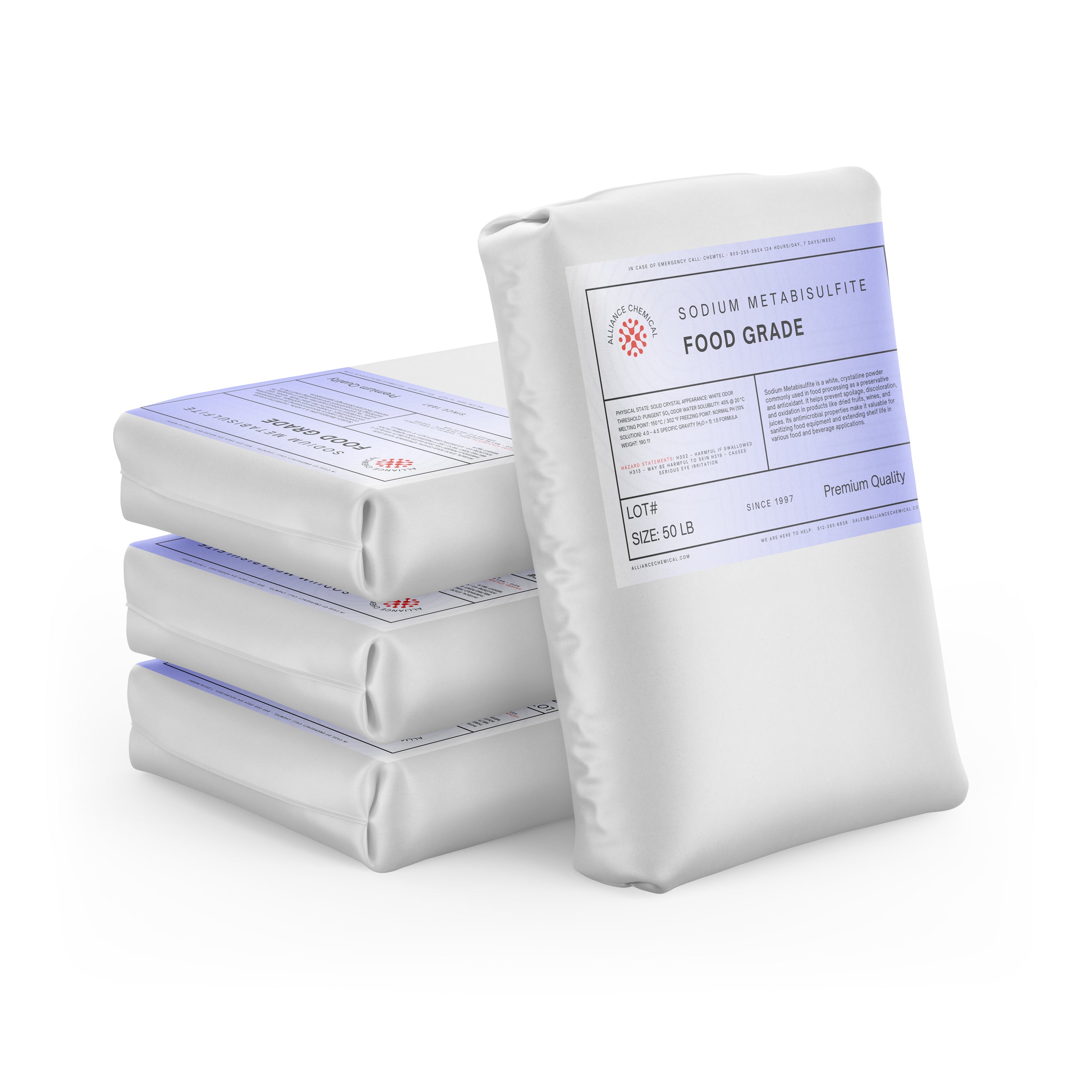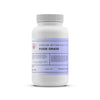Sodium Metabisulfite - Food Grade
$30.00
Unit price
Quantity
Ask a question
Product Overview
Sodium Metabisulfite (Na₂S₂O₅) is a white crystalline powder that serves as a versatile reducing agent and antioxidant in various applications. This food-grade chemical is formulated to meet strict industry standards and is commonly used in food processing to preserve freshness and prevent browning in fruits and vegetables, leveraging its ability to inhibit enzymatic browning reactions. The product is supplied with a high assay purity (typical 99.5% by titration) to ensure reliable performance in preservation and antioxidant roles, while maintaining controlled impurity profiles that support compliance with HACCP and FDA guidelines for food additives. The material’s density (1.48 g/mL at 25°C) and specific gravity (typical 1.48 at 20°C) enable accurate dosing in batch processes and automated feed systems, with a low residue after ignition to minimize carryover in sensitive applications.
This specification-driven profile is reinforced by a rigorous quality program, including APHA color assessments, humidity control, and contaminant limits aligned with FCC-compliant food-grade standards. The product is stored dry to prevent clumping and degradation, and is suitable for use in a range of commercial food systems, beverage production, and related industrial processes where controlled antioxidant activity and browning inhibition are required. It is also recognized for its performance in water treatment, photography development, and chemical synthesis contexts where reducing properties and sulfurous byproducts play a functional role.
Key Properties
- Appearance: White to yellowish crystalline powder
- CAS: 7681-57-4
- Chemical Formula: Na₂S₂O₅
- Molecular Weight: 190.10 g/mol
- Solubility: Soluble in water
- Specific Gravity: 1.48 at 20°C
- Density (25°C): 1.48 g/mL
- Odor: Slight sulfurous odor
- Assay (wt %): min 98, max 100 (typical 99.5) • Test method: Titration with standardized NaOH
- Color (APHA/Hazen): max 10 (typical 5) • Test method: APHA/Hazen visual comparison
- Residue after Ignition: max 0.1% (typical 0.05%) • Test method: Gravimetric residue after combustion at 550°C
- Chloride (Cl⁻): max 50 ppm (typical 20) • Test method: Ion chromatography or argentometric titration
- Nitrate (NO₃⁻): max 50 ppm (typical 20) • Test method: Ion chromatography
- Ammonium (NH₄⁺): max 5 ppm (typical 2) • Test method: Ion chromatography
- Sulfate (SO₄²⁻): max 150 ppm (typical 50) • Test method: Ion chromatography
- Phosphate (PO₄³⁻): max 50 ppm (typical 20) • Test method: Ion chromatography
- Arsenic (As): max 0.5 ppm (typical 0.1) • Test method: ICP-MS
- Heavy Metals (as Pb): max 0.5 ppm (typical 0.1) • Test method: ICP-MS
- Iron (Fe): max 0.5 ppm (typical 0.1) • Test method: ICP-OES
- Copper (Cu): max 0.2 ppm (typical 0.05) • Test method: ICP-OES
- Manganese (Mn): max 0.2 ppm (typical 0.05) • Test method: ICP-OES
- Nickel (Ni): max 0.2 ppm (typical 0.05) • Test method: ICP-OES
- Lead (Pb): max 0.2 ppm (typical 0.05) • Test method: ICP-OES
- Zinc (Zn): max 1.0 ppm (typical 0.2) • Test method: ICP-OES
- Aluminum (Al): max 0.5 ppm (typical 0.1) • Test method: ICP-OES
- Chromium (Cr): max 0.5 ppm (typical 0.1) • Test method: ICP-OES
- Cobalt (Co): max 0.5 ppm (typical 0.1) • Test method: ICP-OES
- Calcium (Ca): max 1000 ppm (typical 300) • Test method: Ion chromatography
- Magnesium (Mg): max 1000 ppm (typical 400) • Test method: Ion chromatography
- Sodium (Na): max 2000 ppm (typical 800) • Test method: Ion chromatography
- Potassium (K): max 2000 ppm (typical 800) • Test method: Ion chromatography
Common Applications
- Food Preservation: Used to prevent browning and spoilage in fruits and vegetables; supports color retention and freshness through inhibition of enzymatic oxidation in processing lines.
- Antioxidant in Wine: Acts as an antioxidant to preserve wine quality and stability by scavenging oxygen radicals and maintaining sulfurous balance during aging.
- Water Treatment: Utilized in water treatment processes to reduce residual chlorine and control oxidation-reduction potential in filtration and disinfection systems.
- Photography Developer: Serves as a reducing agent in photographic development processes, influencing image contrast and silver halide reduction mechanisms.
- Chemical Synthesis: Acts as a reducing agent in various chemical reactions and synthetic pathways where controlled sulfur-based reductive conditions are required.
Safety Precautions
Handle and store the product in a cool, dry place away from moisture and incompatibles. Use appropriate PPE, including chemical-resistant gloves and splash goggles, when handling; ensure good ventilation and avoid breathing dust. Keep containers tightly closed when not in use to prevent moisture uptake and caking. Segregate from acids or bases to avoid hazardous reactions, and follow local regulations for storage in approved containers designed for food-grade materials.
In case of exposure, follow standard SDS guidance: eye contact requires immediate rinsing with water for several minutes; skin contact should be washed with soap and water, with medical advice if irritation persists. If inhaled, move to fresh air and seek medical attention if symptoms persist; for ingestion, rinse mouth and do not induce vomiting, seeking medical attention if unwell. Transport and handling should comply with UN 1759 class 8 packaging for corrosive solids and Packing Group III where applicable.
Benefits
✔ High purity food-grade specification – Meets FCC-compliant standards with tight impurity controls suitable for food processing and beverage applications.
✔ Reliable antioxidant and browning control – Provides effective enzyme inhibition to preserve color and freshness in produce and products sensitive to oxidation.
| Property | Value |
|---|
Compare Products
| Price |
|---|
| SKU |
| Rating |
| Discount |
| Vendor |
| Tags |
| Weight |
| Stock |
| Short Description |

